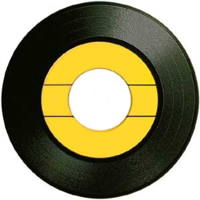
|
The Society of Folk Dance Historians (SFDH)
Preserving Sound Recordings
[
Home |
About |
Encyclopedia | CLICK AN IMAGE TO ENLARGE |

|
 Recently, an article about preserving sound recordings made the rounds on the Internet. Preservation can be complicated. Because the brief article might mislead in some respects, you should know:
Recently, an article about preserving sound recordings made the rounds on the Internet. Preservation can be complicated. Because the brief article might mislead in some respects, you should know:
- Many CD-R and DVD manufacturers ignore longevity, specifically, longevity of the coating layer on the side that you write on or put a label on to identify the disc. Chemical decomposition doubles for each 10•C increase in temperature, so keep your discs cool.
- The ink in some felt-tipped pens dissolves that coating layer. Use CD/DVD pens for CD/DVD labeling.
- When the coating layer fails, the aluminum reflecting layer oxidizes. Use true "gold on gold" CD-Rs and DVDs, not those with just gold dye. Mitsui used to be the only manufacturer of "gold on gold" CD-Rs and DVDs, but I would be happy to know of others.
- CD-R and DVD dye is light sensitive, which is why CD-Rs and DVDs work in the first place. So minimize exposure to light, especially to UV light from sunlight and fluorescents.
- To avoid loss from natural disasters, burn backup copies to be stored in another building, as far away as possible.
- Magnetic tape and discs demagnetize slowly over time. Tapes delaminate, even if kept perfectly dry. Magnetic storage is a very short-term solution.
- The storage standard for the sound itself depends on your needs.
- For most research, or for simply learning tunes, MP3 will do. In fact, many older folks prefer to hear the compressed MP3 sound because of its artificial "brightness" that compensates for aging ears that have lost sensitivity to high frequencies.
- For most pleasure listening, CD standard of 44,100 samples per second at 16-bit resolution pleases all but the most demanding ears.
- But for true archiving, you'd want at least 96,000 samples per second at 32-bit depth.
Note: For archival fidelity and longevity, nothing beats the phonograph record. Most of us, however, know the logistical problems with records: weight, bulk, and fragility.
A fundamental tenet of archival enterprise says: "You will never have time to process material twice." So, define your needs and digitize once, to the highest standard you might ever need, on "gold on gold" CD-Rs or DVDs or some other optical format, and store copies offsite. If you have questions or additional suggestions, please share them.
This article appeared in the Society's March 31, 2006 Report to Members (Ron Houston, editor) and then in the October 2008 issue of the Folk Dance Federation of California's Let's Dance! magazine.
The November 2008 issue of Let's Dance! magazine contained this curious editorial:
Of Dinosaurs and Music Lovers
"Ron Houston editor, Society of Folk Dance Historians, gave us a very interesting and informative article for the October issue about preserving sound recording. I don't totally agree with his assessment of the durability of tape, but he has a lot of valuable information. (I have some old 8-track tapes–remember those–in my darkroom that sound just fine without any discernable [sic] loss in fidelity or level.)"
Ron became aware of this editorial in 2019 and replied:
Magnetic tape longevity depends on several factors.
- Formulations of the backing material, coatings, and glues: Magnetic tape vendors got their materials from jobbers, who get their materials from chemical supply companies. Up and down the supply chain, the specifications referred to properties, not to formulas. Therefore, formulas varied from batch to batch and frequently were unknown. You may get a good batch, and you may not, and you would not know until the final product failed.
- Thickness of the tape: Thin tape allows the magnetic signal from one layer to imprint on the next layer, distorting the sound. 8-track cassettes used thick tape because of the mechanical stresses put on it, and very well may have retained a signal longer than thinner reel-to-reel or cassette tapes.
- Storage: Temperature changes stretch and shrink tape, abrading contiguous layers and distorting sound. Humidity softens glues, sticking layers of tape together and releasing the coatings. Tapes stored in thermally stable, low-humidity conditions will last longer.
- Magnetic fluxes: All tapes spontaneously de-magnetize over time. Generally speaking, count on 50 years for a good tape stored in good conditions to retain a strong signal. Count on NO more years if you store your tapes near magnets such as loudspeakers, electric motors, or live electrical cables.
Sound recording has evolved since 2006. The principles stated above still apply, but storage media have changed.
I now recommend digitization of sound recordings at archival standards and FREQUENT migration of the digital bitstreams from one computer to the next, because operating systems and file formats change.
Digital corruption inevitably will occur, and for that reason, I strongly recommend storage of sound recordings on phonograph records – yes, on mechanically cut or pressed analog phonograph records.
That's what we here at the Society of Folk Dance Historians do, because those old records are still the most permanent, highest fidelity media we have. None of us may be around in 50 years, but we owe it to future generations to preserve for them what we enjoyed.
This page © 2018 by Ron Houston.
Please do not copy any part of this page without including this copyright notice.
Please do not copy small portions out of context.
Please do not copy large portions without permission from Ron Houston.